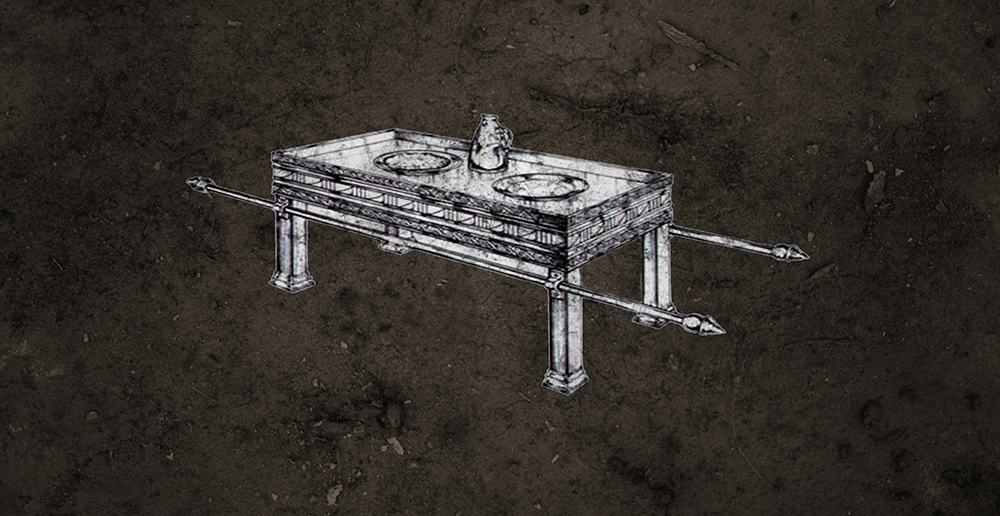Jonathan Edwards on the Typology of the Showbread and Lampstand in the Temple
In his 475th entry in Notes on Scripture, Jonathan Edwards expounded Exodus 25:23–40 with regard to the Christological typology of the showbread and the lampstand in the holy place of the Temple. He wrote:
These both were to stand continually in the holy place before the veil of the holy of holies, one on the north side and the other on the south. Each of these seems to represent both a divine person and also the church. Each represents a divine person. The showbread represents Christ, and was set on [the] south side at God’s right hand, as Christ is often represented as being set at God’s right hand in heaven, being next to God the Father in his office, and above the Holy Spirit in the economy of the persons of the Trinity. The candlestick, or at least the oil and lamps of it, represent the Holy Spirit, and is set at the left hand of God’s throne. Christ is as it were “the bread of God”; he is so called, John 6:33. He is the portion of God the Father in whom is his infinite delight and happiness; and as our Mediator and sacrifice, he is as it were the bread of God, as the ancient sacrifices that were only typical of Christ, are often called the “bread of God.” This bread is called the showbread, in the Hebrew, Lechem Panim, “the bread of God’s face,” or “presence.” So Christ, in Isaiah 63:0, is called Malak Panim, “the angel of God’s face,” or “presence.” This bread had pure frankincense set on it, which undoubtedly signifies the merits of Christ, and so proves the bread that had this pure frankincense on it to be a type of Christ. And besides this, the bread and frankincense are called “an offering made by fire unto the Lord” (Leviticus 24:7, Leviticus 24:9), which is another proof that this bread and incense were a type of Christ offered in sacrifice to God. The bread was prepared to be as it were the food of God by being baked in the fire; and the frankincense, when removed for new to be set on, was probably burnt in the fire on the altar of incense. There were twelve cakes of showbread, according to the number of the tribes of Israel, to signify that Christ, as offered up in sacrifice to God, is offered as representing his people and church, and presenting himself to God in their name. This bread represents Christ, not only as presented in the presence of God as God’s bread. but as proceeding from the presence of God as the bread of the saint for this bread was eaten by the priests in the temple (Leviticus 24:9). So Christ is often spoken of as the bread of the saints. He is the bread they will feed upon in heaven, which is the holy temple of God, where the saints are all kings and priests.1
1. Jonathan Edwards Notes on Scripture http://edwards.yale.edu/archive?path=aHR0cDovL2Vkd2FyZHMueWFsZS5lZHUvY2dpLWJpbi9uZXdwaGlsby9nZXRvYmplY3QucGw/Yy4xNDozOjA6LTE6MTMyMy53amVvLjE4NjEwMDQ=




Amen. These types and shadows of Christ in the Old Testament are really spiritually edifying.
Great blog here! Additionally your web site a lot up very fast!
What host are you using? Can I am getting your associate link to your host?
I desire my website loaded up as fast as yours lol
Feel free to visit my website; ebc brakes sacramento
magnificent submit, very informative. I’m wondering why the opposite
experts of this sector don’t realize this. You must proceed your writing.
I’m sure, you have a huge readers’ base already!
Stop by my web page :: relationship counseling cost
Great info. Lucky me I ran across your website by accident (stumbleupon).
I’ve saved as a favorite for later!
Feel free to visit my blog … dress wanita murah,
http://odellsxue.soup.io/post/453322116/Gaun-untuk-gadis-gadis-muda-yang-tidak,
This post is invaluable. How can I find out more?
Feel free to surf to my site; rent carpet cleaning machine